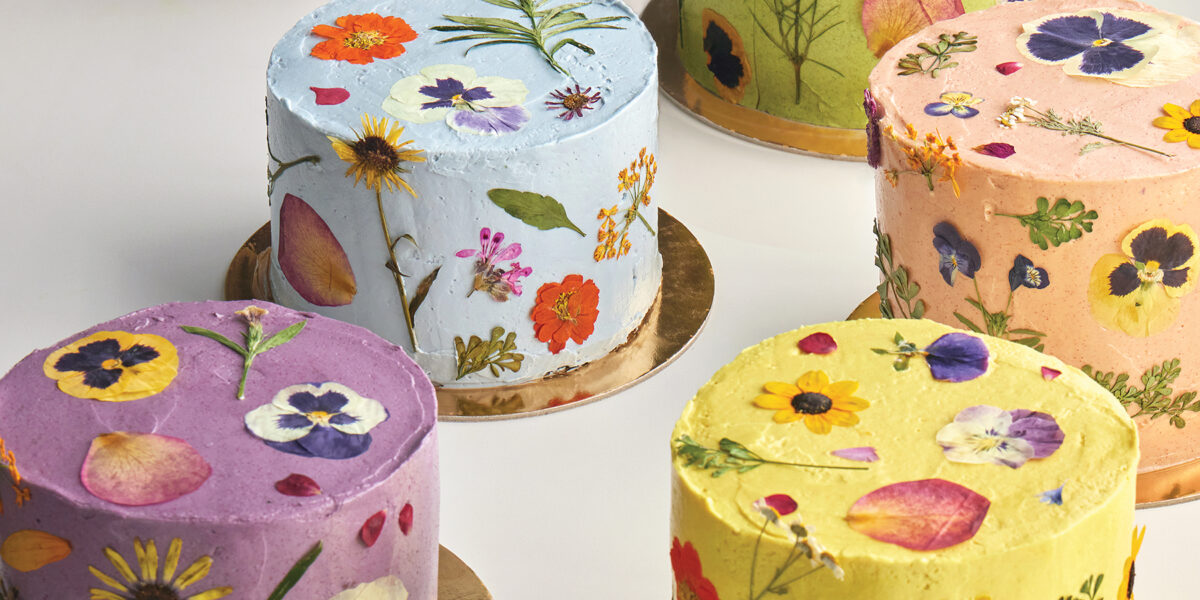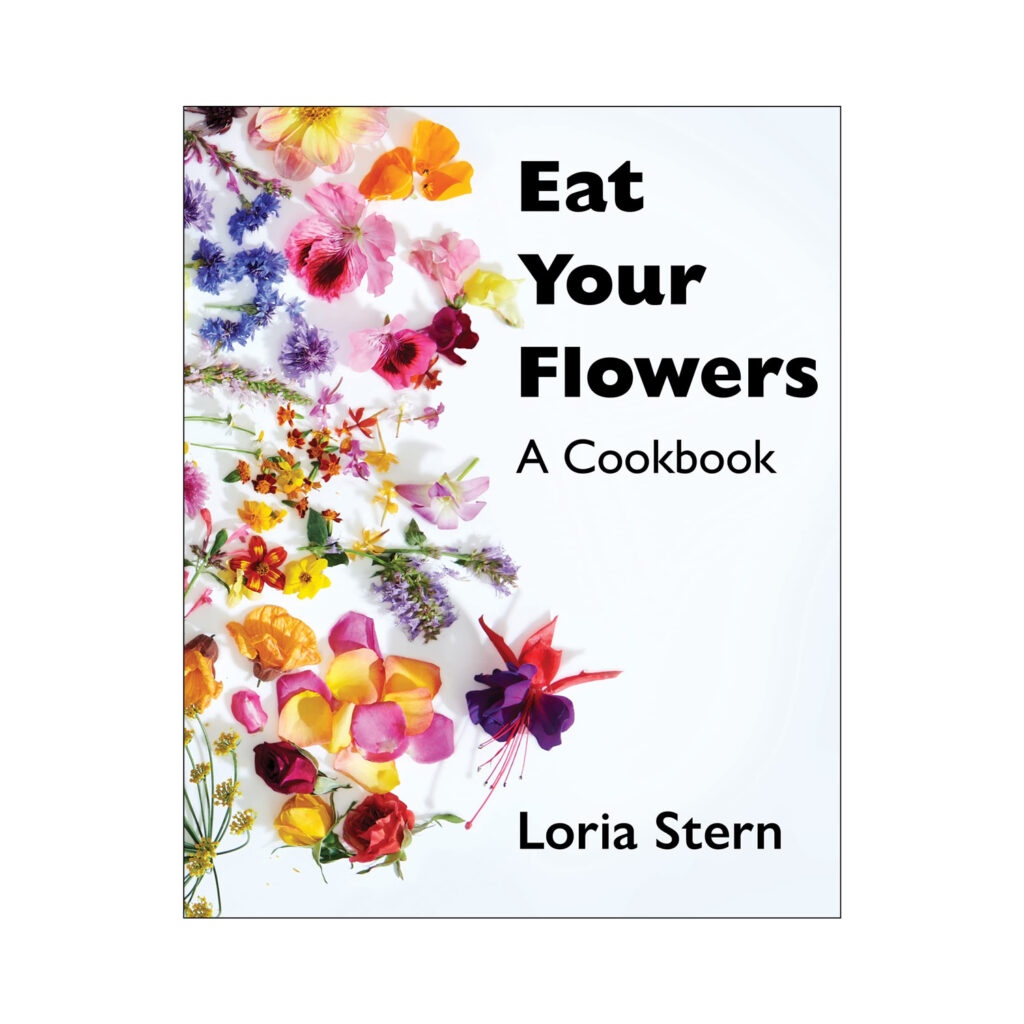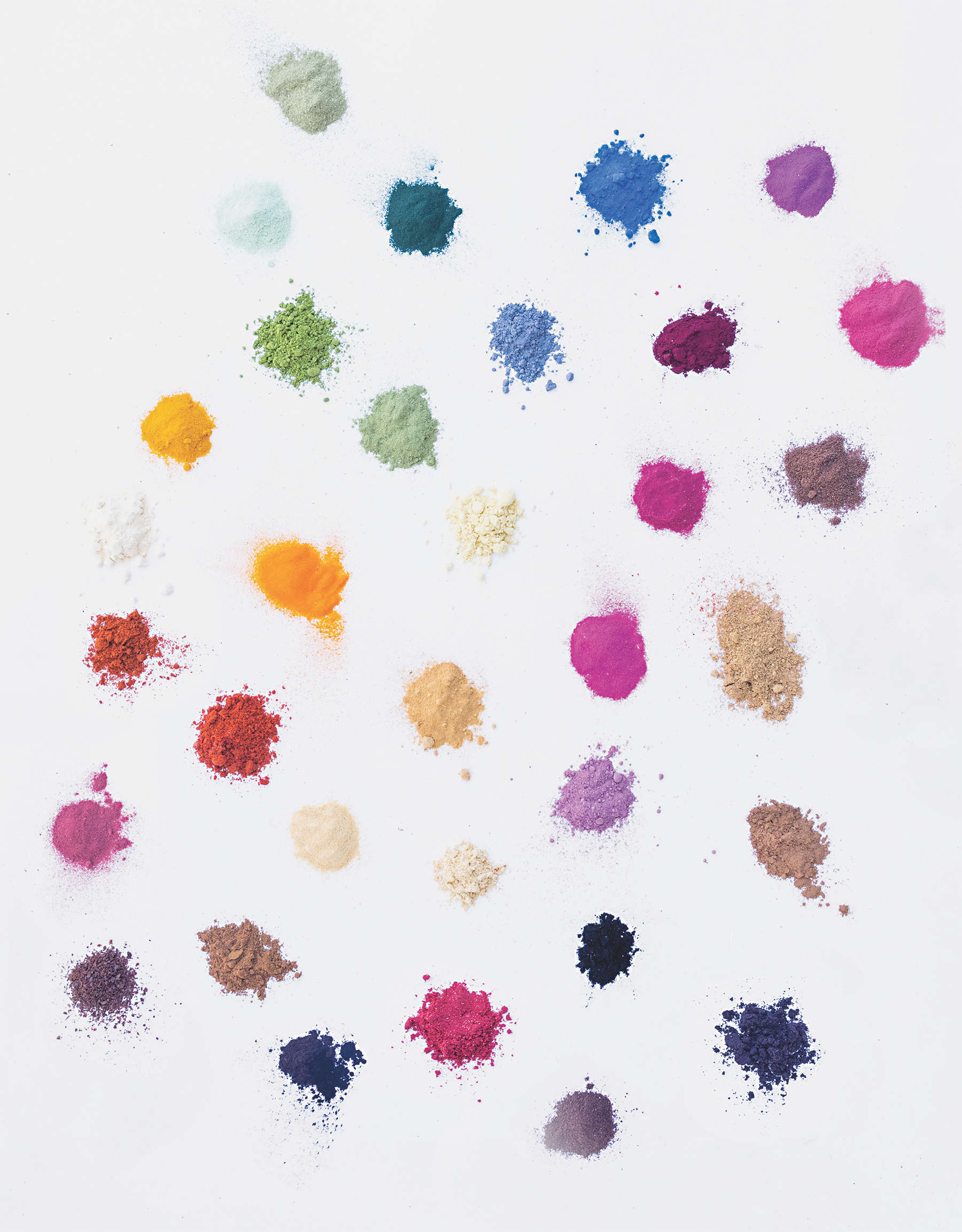
Edible Flowers Are Everywhere These Days—Here’s What to Know Before You Bake with Them
The stunning trend is taking over.

How many beautiful cakes, cookies, cupcakes, etc. dotted with gorgeous blooms have you been seeing on your social feeds lately? I’ve been inundated with them—thanks, algorithm. These creations are whimsical, dainty, spring-y, and give you the sudden urge to throw a garden party, seasonal allergies be damned.
In fact, Pinterest named the bouquet baking trend one of the biggest in its 2023 Pinterest Predicts report. The social media platform found that more and more people were interested in search terms about the topic, like “daisy cupcakes” (+85%), “wildflower cupcakes” (+110%), “purple floral cake” (+85%), and sage green cupcakes (+210%).
Loria Stern knows the trend inside and out. The Los Angeles-based chef and baker is the originator of the botanical-pressed cookie and has her own bakery and catering brand, Eat Your Flowers, which ships all over the U.S. Loria just published her first cookbook, Eat Your Flowers: A Cookbook, which features creative recipes that incorporate botanicals in breakfasts, appetizers, soups and salads, breads, vegetables, pasta and grains, meat, seafood, and of course, desserts.

Courtesy of Amazon
I got the chance to chat with Loria about how she got started and her tips for cooking with edible flowers and other botanicals—check out our Q&A below.
What’s your background and how did you get into edible flowers?
I grew up in Ojai, California, where there was a lot of nature and my family enjoyed spending time outside. We had a vegetable garden where I spent time and first learned about growing food and gardening. I was always into all natural ingredients and whole foods versus anything overly sweet or processed. (I was never a fan of fast food if you can believe it!) Fast forward to me post-college in 2012 when I began working as a pastry chef at a fancy hotel. I enrolled in an adult education class called Edible and Medicinal Plants and learned about foraging and which edibles were used as medicine by the earliest inhabitants of the land. I started combining these two new things I was learning about—edible botanicals and pastry.
How can people find edible flowers? Especially if they don’t have a garden or access to certain rarer flowers?
I suggest people go to their local farmers markets and meet the farmers. Farmers, especially organic farmers, always have edible flowers on their farms because flowers attract pollinators. My suggestion is to meet the farmer and ask them if you can buy edible flowers.
What are some basics people should know about edible flowers?
That each one has a different flavor and texture. I like to do an edible flower tasting on an empty stomach so I can really taste and nuances of the particular flower.
What are some of the pros of making your own colorants? What are some of the drawbacks?
Making your own colorants is a laborious process. I opt for buying them premade, which you can find online and in some global markets.

Laurie Frankel
Do you have any beginners’ tips for people who want to make their own natural colorants instead of using food dyes?
Beginners should know that natural color is lighter than artificial color, so in order to make a dish very vibrant, a lot of colorant is needed, which may change the taste of the dish, so it’s always important to taste as you go!
I know it might depend on the plant or flower, but in general how much of the botanical do you need to make enough colorant?
It also depends on what you are coloring, but I would start with 1 teaspoon to 1 cup to begin.
And when choosing a plant or flower, are there certain things to look for that ensure that you’ll get the right color?
It’s always important to find a bright, vibrant plant or flower as anything dull in color will not really make a difference.

Laurie Frankel
Do you have to use a colorant dust or is there another way to get color?
Using fresh and/or cooked vegetables can also impart natural color, but that option may change the texture and consistency of the dish more than natural colorant dust.
What can you use to get these classic colors: red, orange, yellow, green, blue, purple?
Use the corresponding colorants for each: beet/tomato for red; carrot or beta carotene for orange; turmeric for yellow; matcha for green; butterfly pea for blue; and purple sweet potato for purple.
We only recommend things we love. If you buy something through our site, we might earn a commission.
Read the Current Issue Here!
Get one year of Sunset—and all kinds of bonuses—for just $29.95. Subscribe now!
